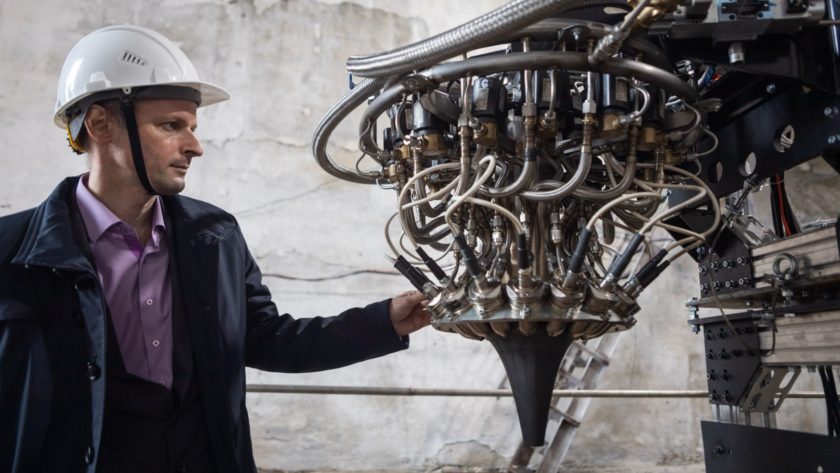Demonstration launches of the center-body-engine propulsion system, consisting of 16 rocket propulsion engines that are integrated into a single unit, were carried out at the site of the AO (joint-stock company) “Science & Research Institute of Mechanical Engineering”. The space rocket demonstration vehicle for the re-entry reusable carrier rocket incorporates artificial intelligence guidance and control systems and has no equivalent in the world. Last year, scientists had a successful test run of it on an alcohol-oxygen fuel pair. This year, after a great deal of theoretical and engineering work, the first-stage engine demonstration tests were successfully carried out on an oxygen-hydrogen fuel, which provides the maximum energy performance for the carrier rocket.
“As a CEO of this company I have a vested interest in ensuring that our project advances. In the future, such aspects as environmentally friendly fuel, reusability and varying sizes of objects that have to perform their tasks in space are important to us. Once again, we realize that we are a space faring nation. The possibilities of space and the demands for different kinds of technology are now immense,” says Elena Matveeva, the head of the AO (joint-stock company) “Science & Research Institute of Mechanical Engineering”. “We need to reach a whole new level, and not to be afraid of experimenting and attracting young people. Our work is guided by the principle of security and by the tasks that the government has set for us. The South Ural State University’s (SUSU) students undertake internships at our facilities, while some stay on for work. SUSU is the kind of university that knows how to train the necessary specialists.”
Moreover, the raising and lowering of the platform to which the flight and landing controls are attached was demonstrated. Scientists are testing different engine positions and carry out calculations that simulate the movement of a rocket in the atmosphere up to an altitude of 100 kilometres. Their job is to find out if the vertical engines can be launched and reduce thrust as the fuel tanks are being drained.
“This is a big and exciting step in our project, because the oxygen-hydrogen fuel is a very explosive mixture, very few countries – such as Russia, the US and China – know how to work with such engines. We are now moving into a new phase, since only this fuel will ensure that all our objectives are met. That is why we initially set out to move to oxygen and hydrogen. There was a lot of hesitation, because it’s a very complicated thing to do,” notes Sergey Vaulin, the Vice-Rector for Research Education Centres and Integrated Science and Technology Programs of SUSU. “Not everything came out immediately, but the launch was successful. The engine was cooled, and had already worked out. No doubt, this launch is an excellent achievement of an utmost international importance. There are no scientific publications that describe the launch of a cooled center-body-engine with oxygen and hydrogen as fuel, so it can be said that these two test runs that have taken place are the very first in the world. The challenges we now face are to improve energy efficiency and experimentally validate our calculations”.
The work on this project is supported by Alexei Teksler, the governor of the Chelyabinsk region. The regional government has allocated 50m roubles, with another 5m being provided by the SUSU and 10 mln. Funded by the Ural Interregional Scientific and Education Center (UIREC). The project is carried out in cooperation with the “State Rocket Center named after V. P. Makeyev” situated in the town of Miass and the AO (joint stock company) “Science & Research Institute of Mechanical Engineering” located in the city of Nizhnyaya Salda.

